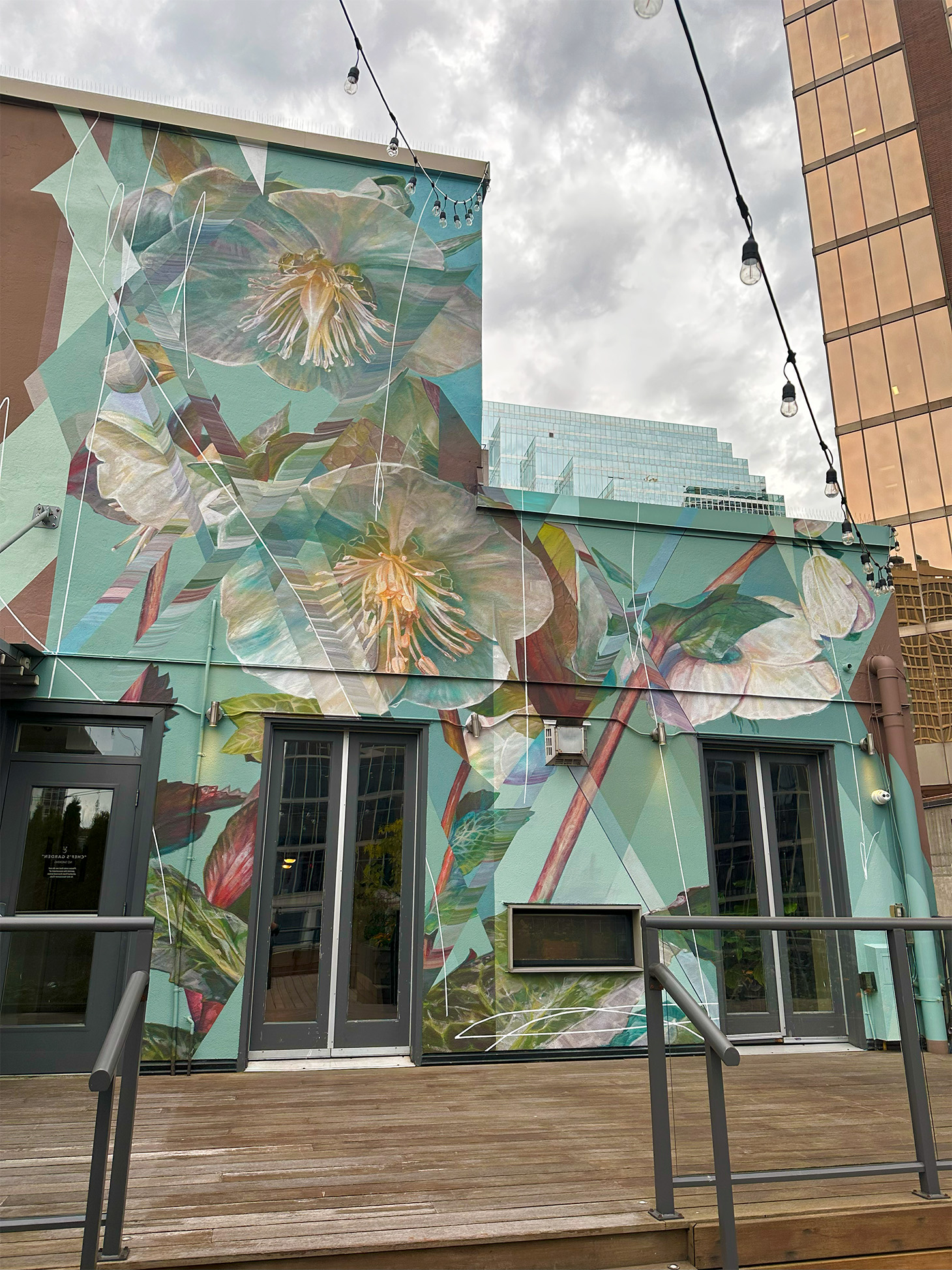There was a time when businessmen and lawyers sipped Scotch whisky in elegant rooms at the Vancouver Club surrounded by pastoral oil paintings and portraits of British royals. The building’s opulent Edwardian façade remains, but inside, the club has changed dramatically. Founded as an exclusive gentlemen’s club for those of British heritage around 1890, by the late 1970s membership had expanded to include men from other backgrounds. In 1993, their doors quietly opened to women as well. And now, the Vancouver Club’s goal to keep pace is reflected in its growing collection of contemporary art.
The club’s art committee has been working diligently to acquire contemporary works by B.C. artists, even selling a 1930 Emily Carr original, The Crazy Stair (or The Crooked Staircase), to help finance the new pieces. Carr’s painting was part of a collection donated to the Vancouver Club by forestry industrialist Harold R. MacMillan. A print now hangs in the Bar and Grill room, while the original graces the Audain Art Museum in Whistler.
Walking into the club’s expansive foyer off West Hastings Street today, guests are immediately greeted by a bright acrylic painting the size of its front door. With its giant, colourful trees surrounded by ocean and clouded sky, Once Upon a Time by renowned Coast Salish/Okanagan artist Lawrence Paul Yuxweluptun pays homage to the land and its Indigenous stewards from time immemorial.
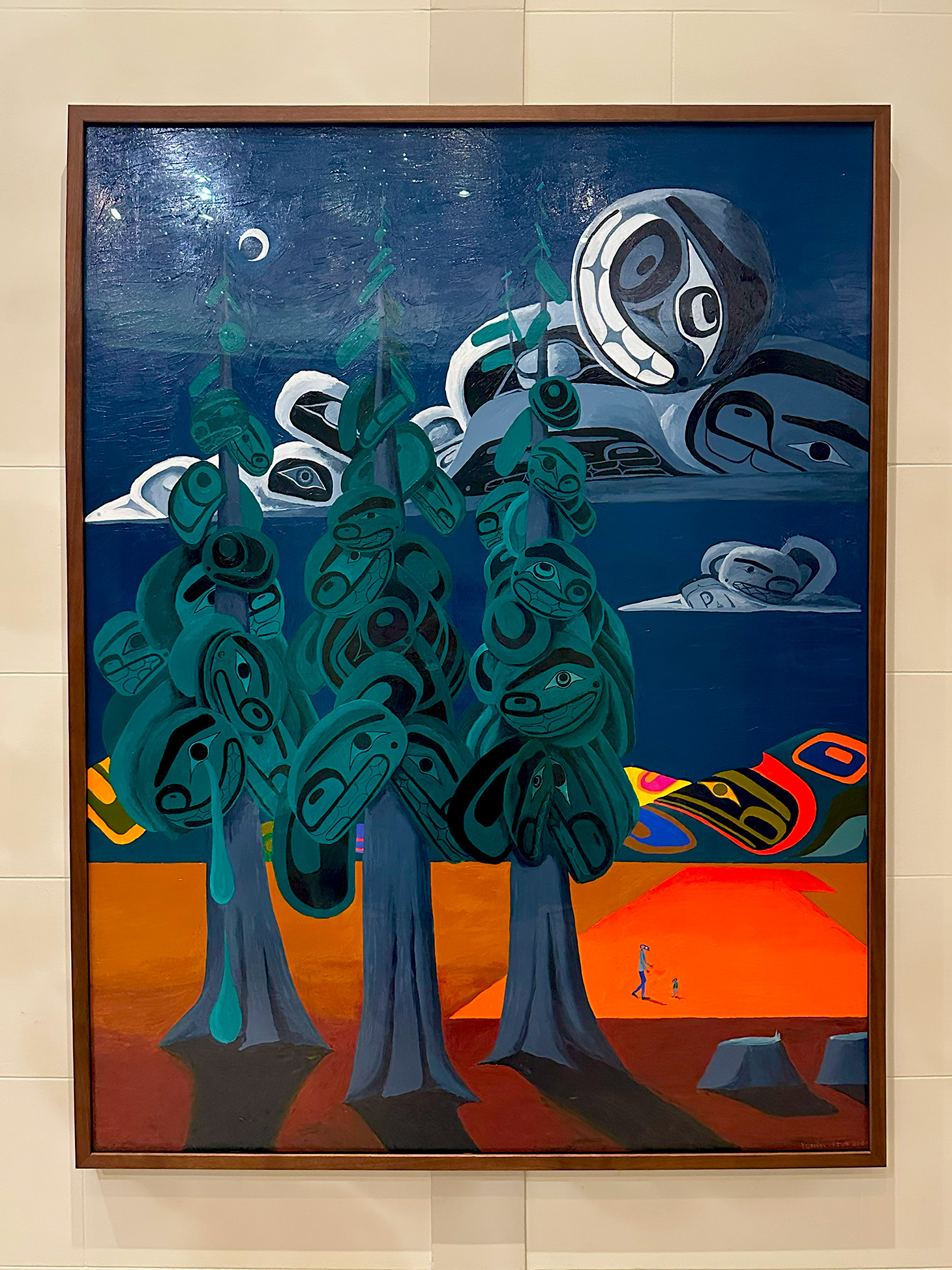
Once Upon a Time (2023). Lawrence Paul Yuxweluptun.
“The art we purchase must have curatorial merit,” says Robin Dhir, the current president of the Vancouver Club, who also chairs its 11-member art and archives committee.
Dhir, a property investor and entrepreneur, is eager to offer a private tour of the club’s art collection, which he played a key role in selecting. Though he acknowledges the loss of oeuvres like Emily Carr’s, he emphasizes the necessity of letting go of the past to make way for the contemporary. “We have a wide variety of art,” he says of today’s evolving collection. “There’s something for every taste and generation and interest.”
Dhir halts by an oil painting by E.J. Hughes. The post-Second World War artist had a passion for B.C.’s landscapes. In this colourful work awash in shades of green, called Eagle Pass at Revelstoke, he captures the beauty of a small town surrounded by towering mountains. It’s a valued piece from a previous era.
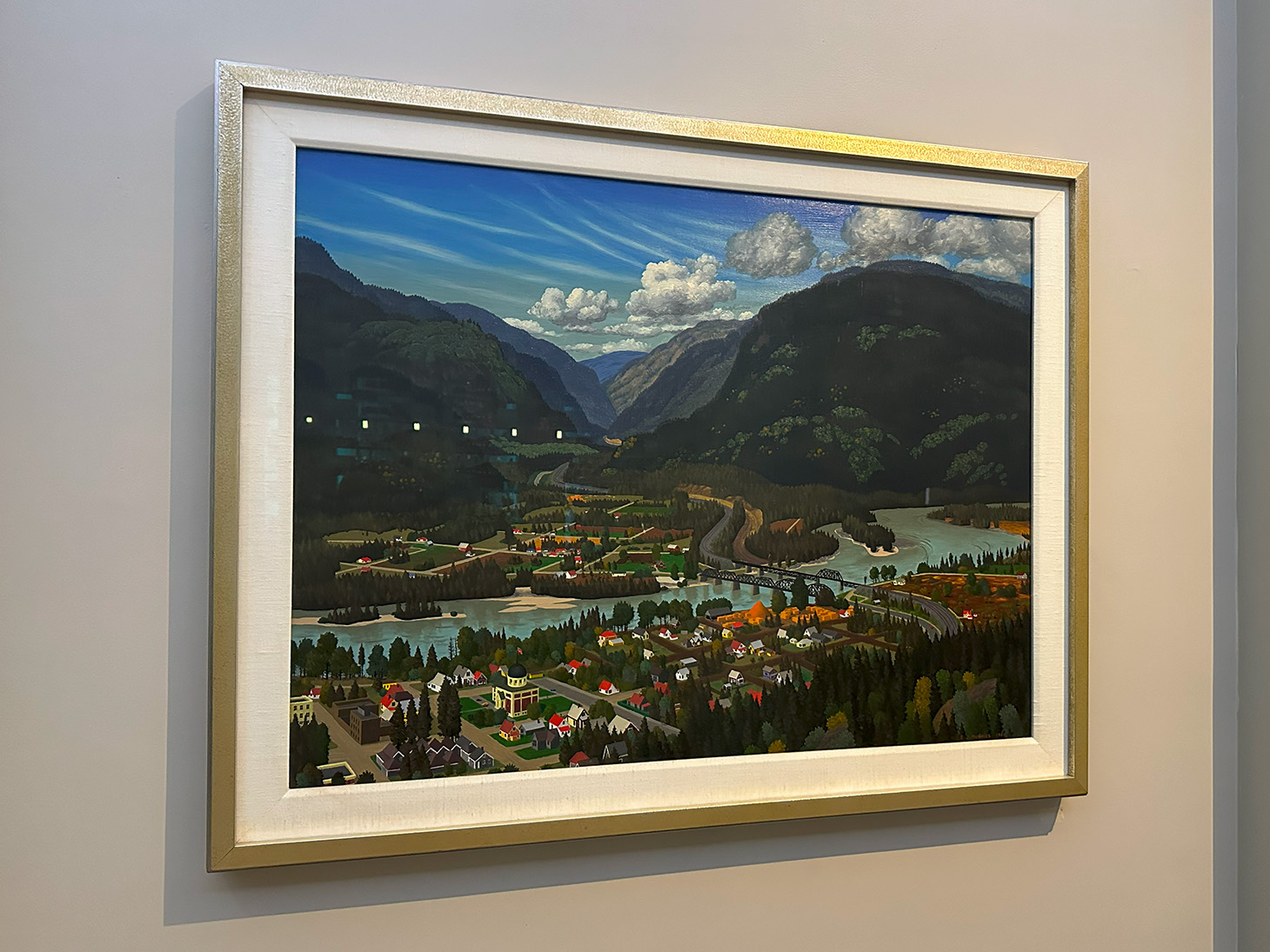
Eagle Pass at Revelstoke (1961). E.J. Hughes.
Dhir leads the way into the dining room, where a portrait of British Prime Minister Winston Churchill still sits above the fireplace. The iconic image, taken by Canadian photographer Yousuf Karsh during the Second World War, is one of many on display here in remembrance of Canada’s ties to the “mother country.”
Taking the carpeted staircase to the second floor, we enter the Georgian Room, whose vaulted ceilings frame a pair of prominent canvases by contemporary Vancouver artist Angela Grossmann. Titled Cerulean Drips and Corn Flower, they are, not surprisingly, executed in blue oil paint. Both depict a female figure wearing a flowing gown, her face hidden. Grossmann’s art has often reflected on women’s lives. Viewing her work inside a former gentlemen’s-only club is remarkable.
Less provocative is W.P. Weston’s Howe Sound, View at Horseshoe Bay, a canvas of undulating mountains in green, brown, and blue oils, the five snowy peaks against a sliver of cloudy sky. Like Hughes’s landscape and early B.C. artist Joseph Plaskett’s unnamed pastel landscapes adorning the University Room one floor up, Weston’s work is among the treasure trove of historic B.C. art still in the club’s possession.
In sharp contrast, a thoroughly modern triptych by artist Scott Sueme, injects a contemporary adventure in colourful, abstract expression into the room.
The Georgian Room leads to the ballroom where another Second World War throwback hangs proudly at the entrance: a gold-framed oil portrait of Captain Cecil Mack Merritt in Scottish military regalia, artist unknown. His son Major Charles Merritt, among the many Vancouver Club members to enlist, was awarded the Victoria Cross for his bravery at Dieppe. After the war, now a decorated lieutenant-colonel, Charles served a term as a member of Parliament for the Vancouver-Burrard riding. He also sponsored Tong Louie to enter the Vancouver Club’s fold in the 1970s, opening the door toward a more diverse membership.

Deep Face (2015). Douglas Coupland. Courtesy of Vancouver Club.
Two floors above the ballroom sits a coworking space unlike others in the city. The more contemporary feel of this floor is reflected in a dozen acrylics on archival print by B.C. favourite Douglas Coupland. Titled Deep Face, the series challenges the world of facial recognition algorithms by deliberately obscuring the faces of otherwise ordinary-looking young men and women.
An aluminum-mounted lightjet print is a focal point of the coworking space. In Elk, by Indigenous artist Dana Claxton, a majestic antlered creature bathed in a glowing pink light gazes out from behind pine branches as it recalls the forest that once stood there.
A sculpted striped shirt and tie are mounted on the wall nearby, in a nod to members’ standard attire. Made from polymerized gypsum, acrylic, and varnish, Tom’s Shirt is a work by Vancouver artist Gathie Falk, known for her ceramic installations.
In a perhaps surprising recognition of the socio-economic challenges surrounding the venerable Vancouver Club, a digital print on paper by Vancouver-based photographer Brian Howell shows a cart filled with small, colourful plastic bottles. Shopping Cart acknowledges the distressing reality of homelessness and addiction just a few blocks east of the club. Dhir was not yet a member of the art committee when this piece was acquired but says the work “reminds us and provides perspective about people who are in need.”
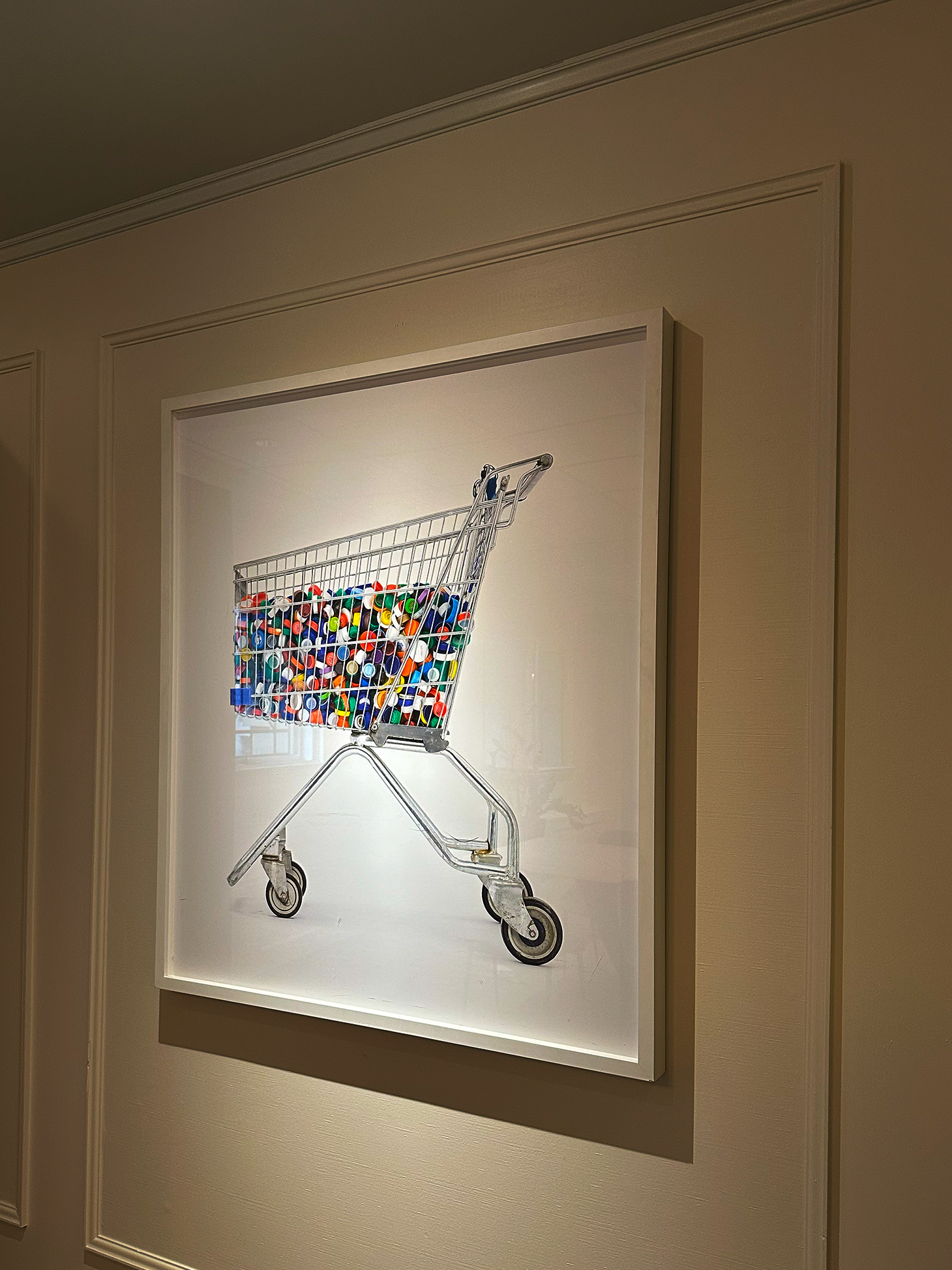
Shopping Cart (2011). Brian Howell.
A final flight of stairs leads to the rooftop. It appears every inch of the building’s interior is used, not only to display a wealth of art but also for functional purposes—from the basement wine cellar, barber shop, and fitness workout area to the eight hospitality suites on the fifth floor.
The tour concludes over specialty coffees in the rooftop garden. The committee has more projects in the works, Dhir says, such as the recently completed Hourglass mural along the walled entrance to the rooftop. “People in other buildings will be able to see it,” he notes.
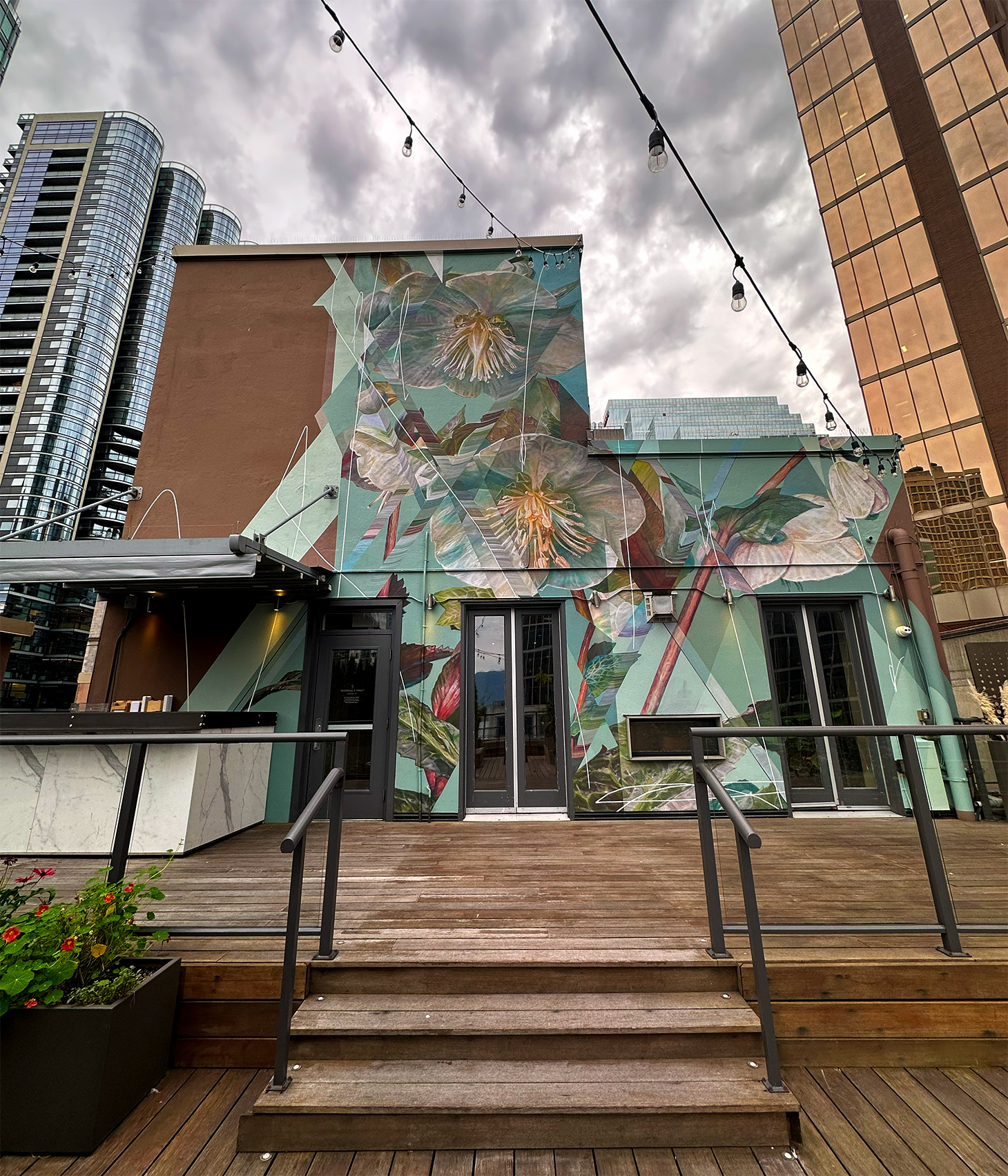
Hourglass (2024). Drew Young.
Dhir has been a member of the Vancouver Club since 2011. He was born and raised in Vancouver by parents who had immigrated to the city from India. “Others tell me I’m the first club president from a minority group. But I don’t think about that.”
Instead, he prefers to emphasize the role of the club as “a home away from home” for its members. And the club’s art collection is a big part of fostering that feeling, he says. “Art is comforting and personalizes the room. It’s no different than putting up art around your house. You could be sitting on your own at the club, waiting in the lobby, or working in the workspace, and an art piece gives you the option to pause and look,” he says. “It may give you a calming influence or inspiration, depending on what you want to take from it.”
And like the club itself, the art collection now includes artists from different eras and backgrounds.
“The Vancouver Club started off as a men-only club, as many organizations in that period were, and has evolved into a club that is reflective of our community,” Dhir says.
“It used to be clubs were for older people and stuffy,” he adds. “Now we have young folks in their 20s joining.”

